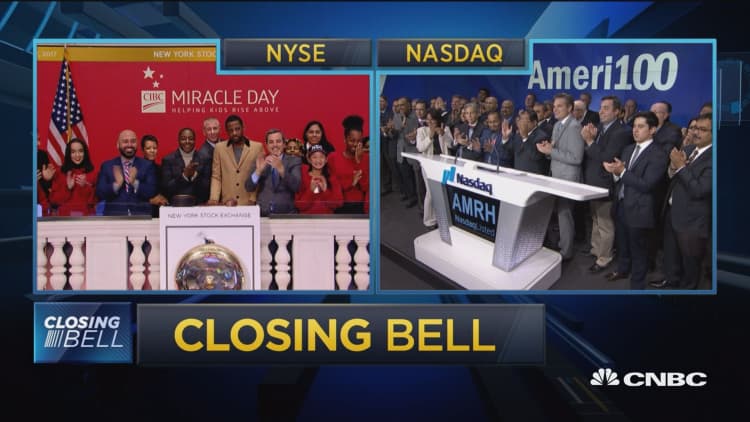Once again, the indexes are back at new highs, and it's not just the , but the Russell 2000, which badly lagged the S&P for more than a month.
The market leader -- technology (XLK, SMH) — is also back at new highs.
High yield (HYG, JNK), which had a rough time a few weeks ago, has also turned around.
The dollar has been a bit weaker, and oil has made a run toward $60.
It's pretty close to a perfect scenario. And once again, there's a litany of reasons the market is in imminent danger of falling apart. Some are arguing that the corporate tax cuts won't get passed, or that they won't come into effect until 2019 or that they won't be as big as expected.
Others argue that the markets are priced for perfection, anticipating great earnings going into 2018 plus tax cuts plus a Fed that will be very slow to raise rates.
But the the crux of the argument against the market remaining at new highs is it's been going on for so long that, darn it, it just can't continue. It just can't. Never mind that everyone has been wrong and calling a top for two years now.
"It can't go on forever" falls into the category of statements that are true, but not interesting.
Will the S&P 500 be up or down in 2018? I don't know, but I've been stocks correspondent for 20 years, and there are two things that always happen at or near a market top.
First, the advance/decline line falls apart as the rally gets selective. Fewer stocks advance and more begin to decline.
Second, the driving force switches from those who want to keep buying stocks to those who are interested in selling stocks to protect gains. Supply increases while demand wanes.
Neither of these factors is present.
The NYSE advance/decline line is at an historic high. It's not just large-cap stocks. The small-cap and mid-cap advance/decline line is also at new highs.
Lowry Research, the oldest technical analysis service in the United States, has noted for many years that declines in the advance/decline line begin, on average, four to six months prior to the final market high. Based on this metric, we're at least several months from a market top.
As for selling pressure, there was a small increase in selling a couple weeks ago when the S&P 500 moved sideways and then slightly down (about 1 percent). Lowry noted that given the market's advance and the sudden flutter, a small increase in selling pressure was "typical" and not statistically significant.
Lowry told clients Monday morning, "this bull market is still showing few signs of age and provides little basis for speculation about its imminent end."
Citadel's Ken Griffin was at the NYSE for a conference on Monday. He told CNBC's Leslie Picker that it is the seventh inning of this long rally. He did note that valuations were "stretched," but also said that the market lacked the mania of a classic market top, and that low rates would still provide a supportive backdrop.
Not to take his comments too literally, but if you are starting the seventh inning of a nine-inning game, it means the market has advanced only a little more than two-thirds of its way to a final market top.
The S&P has moved 1,900 points since the 2009 bottom. If we assume that is the first six innings of the game, and assume the final three innings will have the same proportional gains, we are talking about adding 900+ points from here.
That is a long way off, even with the S&P 500 at 2,600.
The market believes the rally happened on the back of three factors: rising earnings (the markets fluttered during an earnings "recession" a couple years ago), a tidal wave of buybacks and a supportive Fed.
It makes perfect sense that the rally will die if we have a recession that kills earnings growth, we see a notable drop in companies buying back stocks, either because it is too expensive to borrow or they invest more in capital expenditures (which may be a long-term help) and the Fed starts raising rates more quickly than the market expects.
WATCH: Bill Griffeth and Bob Pisani on days' winners and losers



